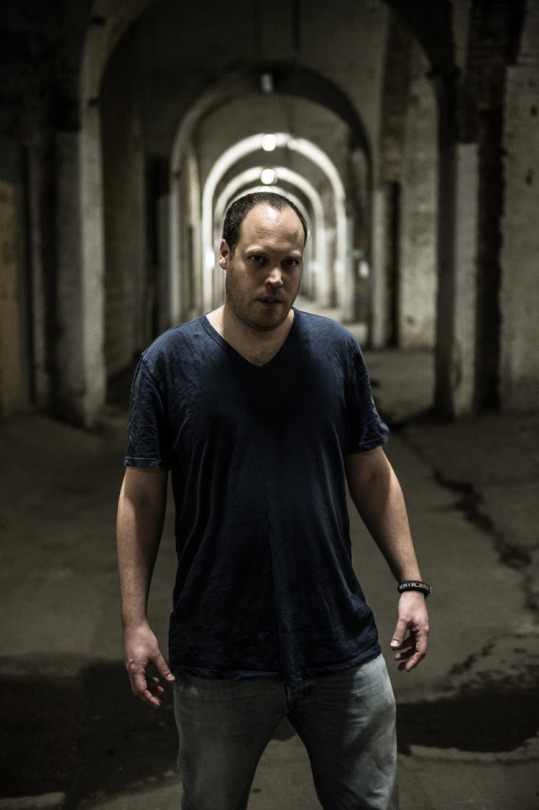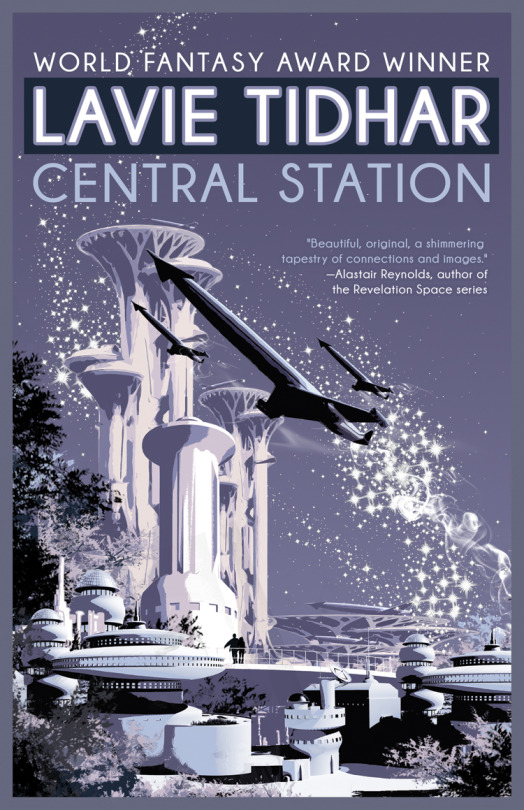CENTRAL STATION is just this side of a masterpiece
The release of Lavie Tidhar’s sublimely sensual, emotionally moreish CENTRAL STATION ushered in a flood of fantastic reviews.

Photo: Kevin Nixon. © Future Publishing 2013.
For NPR, Jason Sheehan lavishes the book with praise.
I read 50 pages of it in a sitting and told anyone who’d listen that this was it — the new jack
NEUROMANCER I’ve been waiting for since forever, all goopy and biological where the original was hard-edged and chromed; a story of refugees and castaways, artists and terrorists, of a used-up earth gone exhausted with age, and a new one still waiting to be born. Sure, there was a long bit with a robot mohel that dragged a little. Some stuff about drugs and religion that was somewhat heavy-handed. But Tidhar has this ability to pivot on a dime — to go deep on some weird tangent, pause, and then come roaring back in a completely different direction, burning up page after page with longing and heartbreak and cyborgs, all written with such aching beauty that I could’ve lived a year in his fractured world and still been sad to leave.What matters is, CENTRAL STATION held together. It is just this side of a masterpiece — short, restrained, lush — and the truest joy of it is in the way Tidhar scatters brilliant ideas like pennies on the sidewalk. He has pockets full of them. Enough here for 10 books, easy.
But the best compliment I can give this one is that as soon as I finished it, I sighed, smiled, closed the back cover, then turned the whole thing ‘round and immediately started over again at Page 1.

Niall Alexander at TOR.COM applauds Tidhar’s efforts.
World Fantasy Award winner Lavie Tidhar rewrites the rules of the short story collection in CENTRAL STATION, an ambitious assemblage of thirteen tales tall but indubitably true that are all the more remarkable when read together.
<snip>
And all that? That’s just the start. CENTRAL STATION isn’t a particularly lengthy collection, but its brevity belies the ambition of a typical trilogy. It has an expansive cast of characters; more than enough, as a matter of fact, to justify the appendix Tidhar appends to the text—not that I ever felt the need to refer to said, as almost all of the people we see are given his or her or its own time to shine.
Likewise, the overarching events Tidhar delicately threads through his third collection are absorbing in and of themselves, but at the same time, they open the door for the author to explore an embarrassment of ideas, including but not limited to the ascent of artificial intelligence, the aftermath of the technological singularity, robots as “an awkward evolutionary step between human and Other,” Earth’s place in settled space, and finally—for this paragraph if not the narrative—the future of faith.
<snip>
Fulfilling that awesome promise—leaving Neve Sha’anan at last—is not nearly so easy for our unfortunate few; nor, indeed, was bidding goodbye to this exceptional collection an elementary experience for me. With each transmuted tale “a node linking the whole into something greater than its parts,” CENTRAL STATION is without question the best assemblage of short stories I’ve read in recent memory.
Sublimely sensual, emotionally moreish, and composed with crystalline clarity irrespective of its incredible complexity, if this is “what SF is going to look like in the next decade,” as editor extraordinaire Gardner Dozois declares, then readers: the next ten years will be olsem diffren indeed—which is to say the same, but different, in asteroid pidgin.
For SENSE OF WONDER, Antonio Díaz reviews the never dull CENTRAL STATION.
However, and despite the multiple POVs, there is only one protagonist: Central Station itself. Tidhar paints a precise and evocative picture. Central Station is the communication node between Earth and the Solar System. It raises above the city of Tel Aviv, it extends creating its own community and sinks its roots well below the city. The author tell us not only about the characters, but also about the city’s historical framework in a very approachable way. After reading the book, that barely breaks the 200-page mark, I have the impression of knowing a lot about the station’s history without suffering tedious infodumps.
Tidhar’s writing is one of the novel’s strong suits. It is elaborate but not convoluted and poetic but not tiresome. He coins words like Schrödingering, robotnik, shebeen, kathoey… but that doesn’t hinder reading at all, on the contrary, provides richness. The author also develops a couple of invented languages like Battle Yiddish (a mix of German with which I guess is Hebrew) or Asteroid Pidgin (an English corruption that makes it more phonetic). All this work, together with the effort made to depict the characters’s daily life, adds tiles to the novel’s mosaic.
Tidhar’s imagination is not only seen in the newly-minted terms or the quirky languages the novel has, but in the ideas it contains. CENTRAL STATION is full of fresh and well-thought concepts. However, the principal key to the plot’s evolution, related to the artificial intelligences called ‘The Others’ is somewhat unfinished and unsatisfying. I understand that this, like the absence of the a plot main beam, is an effect of its fix-up nature.
Definitively, this is a novel that can be enjoyed more as a trip around Central Station and that can be savoured in small sips. Nevertheless, it can cloy a bit if ingested with haste. Its short length plays clearly as a strength in this case, as CENTRAL STATION is never dull and never boring.

BLUE BOOK BALLOON chimes in.
The breadth of Tidhar’s imagination in this book just left me gasping.
<snip>
For myself, I loved it. Whether it’s Achimwene’s tender (doomed?) love for Carmel, Miriam’s confused feelings for Boris, Boris’s concern for his father or the simple story of a child waiting for his father to return, this is an absorbing tapestry – the more so for Tidhar’s slightly warped view of future religions (“the Church of Robot”), his wry turn of phrase (“the tin man’s burden”), (“furniture with hostile programming”), beautiful language (“Under the eaves. Under the eaves. Where it’s always dry where it’s always dark, under the eaves”, “Memory like a cancer growing”) or a myriad other things, the book fizzes with invention and in its portrayal of future humanity, has real heart.
I hope that there will be more from this world. The book brings together separate stories, a feat that, again, echoes Golden Age SF and it does so very well, creating a wonderful text but I would simply kill for a full length novel drawing on all this background and carrying the story forward as hinted at in the Preface.
At STRANGELY CHARMLESS, JC Hoskins joins the party.
CENTRAL STATION, the novel, is a loose kind of saga. It’s a story—or many stories—about family. Not only blood, but love: romantic and otherwise. It’s about all the strange kinds of bonds that tie people together, in the present and across the years. It’s a story about muddling along together, all the disparate stories interlinking, all the opposites mingling, making a greater whole. A greater future.
For more info about CENTRAL STATION, visit the Tachyon page.
Cover and poster by Sarah Anne Langton
